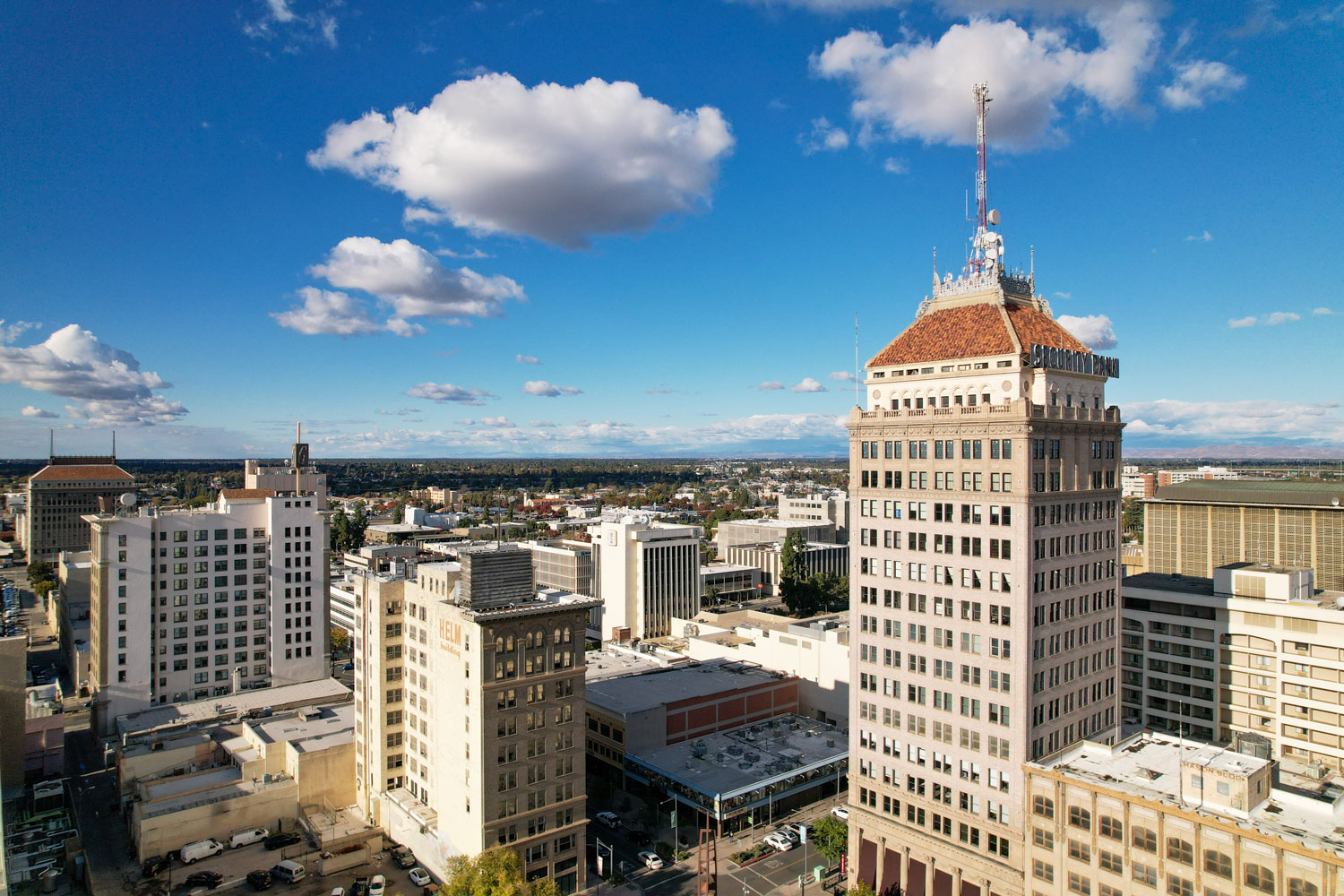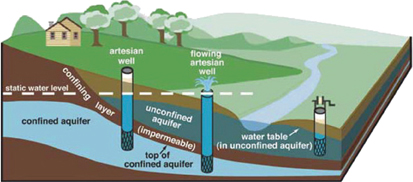Water Quality and Testing

WE CONTINUE TO PROVIDE CLEAN, SAFE, RELIABLE DRINKING WATER There is no impact to the safety of the drinking water delivered to City of Fresno water customers. The City’s water treatment plants are designed to eliminate pathogens, including viruses and bacteria, and the City maintains an appropriate level of chlorine in the distribution pipes to ensure the water stays safe as it travels to homes and businesses. The City continuously monitors and tests drinking water, and the water always meets or exceeds every state and federal requirement that safeguards public health.
The City of Fresno delivers drinking water to approximately 500,000 residential, commercial, and industrial customers over a 114 square mile are of the city including many county Islands.
The City of Fresno runs numerous treatment facilities that disinfect and remove synthetic organic contaminants at various well sites.
Water Meters
Fresno receives 60,000 acre-feet of high-quality water annually from behind Friant Dam. To comply with the terms of the Central Valley Project (CVP) water contract with the U.S. Bureau of Reclamation that supplies this water, the City of Fresno is required to measure (meter) all water deliveries to customers. As a result, Fresno was mandated to install water meters, and bill by a volumetric rate, all of its residential customer accounts by January 1, 2013. Commercial and multi-family accounts were already metered and billed at a metered rate.
In order to comply with the terms of the contract and state law, the City installed water meters at all single-family residences that did not already have meters. The multi-year installation project started in 2008 and was completed in December 2012.
Assembly Bill 514 (2003)
Assembly Bill 2572 (2004)
City of Fresno Embarks on Water Meter Process (Press Release)
Water Quality Reports
The State of California and the U.S. Environmental Protection Agency require water utilities to provide an annual Consumer Confidence Report (CCR) to their customers. This report contains important information concerning the quality of your drinking water.
The following reports are provided in PDF format. A free PDF reader is available from Adobe.
WATER QUALITY REPORT
2024 Water Quality Report
2023 Water Quality Report
2022 Water Quality Report
2021 Water Quality Report
2020 Water Quality Report
2019 Water Quality Report
2018 Water Quality Report
2017 Water Quality Report
2016 Water Quality Report
2015 Water Quality Report
2014 Water Quality Report
2013 Water Quality Report
2012 Water Quality Report
DRINKING WATER SOURCE:
Drinking Water Source Assessment & Protection Program Reporting
DWSAP Cluster Well Grouping Report
Water Sources
We provide 125,000 million gallons of water to more than 550,000 residents in the City and County of Fresno
Primary Water Sources
Water for City of Fresno customers comes from two primary sources, groundwater and surface water. For many years, groundwater pumped from our underground aquifer was the sole source of water for Fresno. In 2004, the City of Fresno began treating surface water at our facilities to replace some of the water taken from the aquifer, supplement for the lack of water during the drought, and provide long-term water sustainability to create a more balanced supply. Additionally, the City runs an aggressive recharge program to supplement the natural replenishment of the aquifer.
- 200 acres of recharge basins
- 30 million gallon per day (MGD) Surface Water Treatment Facility in Northeast Fresno and a 2 MGD storage tank in Southeast Fresno
- 46 billion gallons of safe, reliable, and affordable water
Water Production & Distribution
When water is pumped up from the aquifer, it is distributed through a transmission grid main system to individual customers.
- 1,780 miles of distribution pipeline
- 140,992 service connections
- 12,952 fire hydrants
- 18,942 main line valves
- 260 active pump stations
Fire Hydrants
Groundwater
The major source of drinking water for City of Fresno customers comes from the Fresno Sole Source Aquifer, a large underground water system that supplies many communities in the San Joaquin Valley. To supply water, water production wells are drilled to extract water from the aquifer. Water is then distributed through pipelines to individual customer services. Approximately 260 water wells are scattered throughout Fresno to provide water to the community.

ARTIFICIAL RECHARGE
As Fresno continues to grow, there is more demand on the groundwater supply. Taking out more water than is put back into an aquifer (groundwater) creates what is called an over-draft. This increases the depth to the water table and can create water quality problems with additional treatment costs. The City is forced to drill deeper water supply wells, which results in increased power costs to pump the water from the underground.
Further, as water is depleted from the underground, it is possible to cause land subsidence, a phenomena that happens over time where the surface of the land sinks because soil becomes compacted and is no longer able to hold water.
Currently most drinking water in the City is pumped from approximately 260 water wells at an approximate cost of $9 million in 2011 just for the electricity to run the pumps.
Rainfall and stream flow replace about half of the water we pump each year. Fresno holds entitlements to surface water from Millerton Lake and Pine Flat Reservoir. This water is used to replace the other half of the pumped groundwater. Once released from each reservoir, surface water is delivered through canals to flood control basins and “Leaky Acres”, a city-owned intentional recharge facility.
GROUNDWATER BASIN AND LEVELS
For information about the groundwater basin, aquifers, and groundwater levels, please see the Ground Water Supply section of the Water Resource Management page.
Surface Water

While groundwater has traditionally been the sole source of water for Fresno, the Surface Water Treatment Facility (SWTF) now supplements our system with water delivered directly from the Sierra Nevada Mountains to the facility for treatment. The SWTF supplies thousands of homes in Northeast Fresno – more than 20 million gallons of water per day. During the peak demand summer season the facility supplies approximately 15% of Fresno’s potable water. During the low demand winter periods the facility supplies more than 30% of the community’s supply. A second surface water treatment facility is planned in southeast Fresno to meet demands anticipated by the redirection of growth suggested in the 2025 General Plan.
SOURCE OF SUPPLY AND CONVEYANCE
Implementation of the Metropolitan Water Resources Management Plan to develop the infrastructure for conjunctive use of all of the City’s surface water supplies, along with enhanced groundwater recharge and conservation, would balance Fresno’s groundwater budget for the first time in over 75 years. As a part of this proposal, expansion of the existing Northeast surface water treatment facility (SWTF) and creation of a second SWTF in southeast Fresno are planned in order to offset current demands and to meet future demands from anticipated growth. Construction of the Regional Transmission Distribution System will allow treated surface water to be delivered everywhere in the City in order to support current demands and future growth. This plan will enable us to conserve our groundwater as an alternate supply that can be relied on during periods of drought.

Precipitation and snow melt from the Kings and San Joaquin watersheds are provided by the City’s federal Central Valley Project contract and Fresno Irrigation District entitlements. The snow melt from the Sierra Nevada Mountains, runs into the Kings and San Joaquin Rivers. Currently, water is supplied via the Enterprise Canal, a 25 mile circuitous, open channel that winds its way through ag and urban settings. The Enterprise Canal can deliver from either of the City’s water supply sources.
In the near future, a five mile pressure pipeline will be constructed directly from the Friant-Kern canal to the SWTF. The pipeline will provide raw water quality enhancements, additional public health protection and adequate hydraulic head to operate the treatment works without supplemental lift. After pipeline completion, the Enterprise Canal will become a secondary supply source.
ABOUT THE TREATMENT
The SWTF utilizes a three-step treatment process: clarification, filtration and disinfection. “ACTIFLO®” is a patented term for a unique clarification process, which involves treatment additives plus microsand being injected into the water and rapidly mixed together to form a “ballasted floc.” This process removes suspended material and bacteria that may be living within those particles. The process repeats itself in a series of basins as the growing floc settles at the bottom. The cleaner water travels upward through a honeycomb-like set of tubing and is finally sent on to the ozone contact basin. This entire process is commonly called coagulation, flocculation, and sedimentation. While it could take nature several years to achieve this clarity of water, this entire process takes about 15 minutes.

The ozone contact basin is where both ozone disinfection and oxidation occur. Water coming from the ACTIFLO® process is injected with thousands of tiny ozone bubbles. A powerful oxidant, ozone destroys many types of microorganisms; color, taste and odor compounds; and some man-made organic compounds. Once the ozone has effectively done its job (within about 10 minutes), it rapidly dissipates. By the time the water leaves this basin, it is ozone-free and travels on to the granular activated carbon filters for additional purification.
Water Testing
More than 128 physical, chemical and microbiological tests are performed every day for the SWTF to ensure that the entire treatment process has achieved its primary public health goal. All data collected in the laboratory is submitted each month to the California State Department of Health Services as part of a monthly regulatory report on the performance of the entire treatment process. An average of 48 water quality tests are taken each workday for groundwater.
Testing Backflow Preventers
Through the Cross Connection Control program, the Water Division coordinates the planning, installation, and maintenance of backflow devices.
CROSS CONNECTION CONTROL
Technology has made it possible to deliver safe drinking water of high quality to our customers. To assure safe water, it is essential that a physical cross-connection is eliminated. If this is impractical, protection by installation of an approved backflow-prevention assembly becomes necessary.
The two most common types of backflow assemblies required by the City are the Reduced Pressure Principle (RPP) and the Double Check. There are other types, but these two offer the most resiliency for backflow prevention.
Each year, the City administers the testing of all backflow preventers that are installed. Any RPP device that fails the required test is also repaired by qualified testing agencies or Water Division employees. Any device that is tested, and determined beyond repair, must be replaced by the owner. Number of back-flow prevention devices installed in the City as of 10/14/2024: 10,284
DEFINITION OF WORDS USED IN CROSS CONNECTION CONTROL
Backflow: reversal of the normal flow of water caused by either backpressure or backsiphonage.
Backpressure: flow of water or other liquids, mixtures or substances under pressure into the city water supply.
Backsiphonage: flow of water or other liquids mixtures or substances into the city water supply caused by the reduction of pressure in the city water supply system.
Backflow Prevention Assembly: an approved assembly or means designed to prevent backflow.
Cross Connection: any unprotected actual or potential connection or structural arrangement between a water system and any other source or system through which it is possible to introduce into any part of the city water system contamination or pollution.
Backflow Testing
For backflow testing information call BSI Online at (800) 414-4990